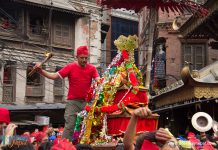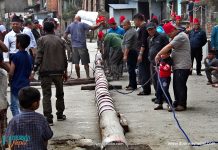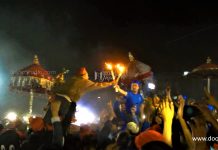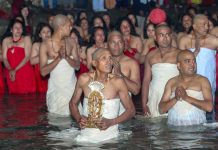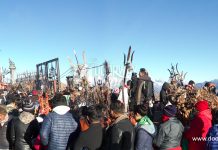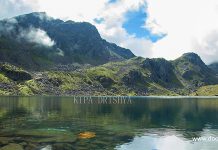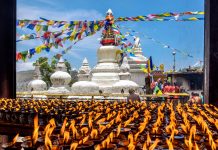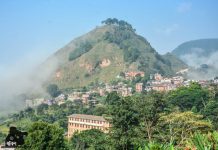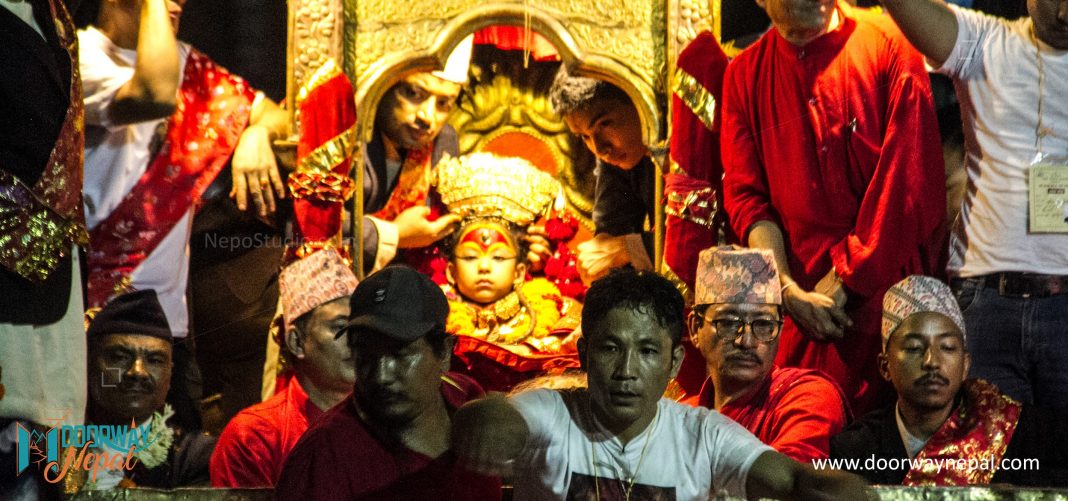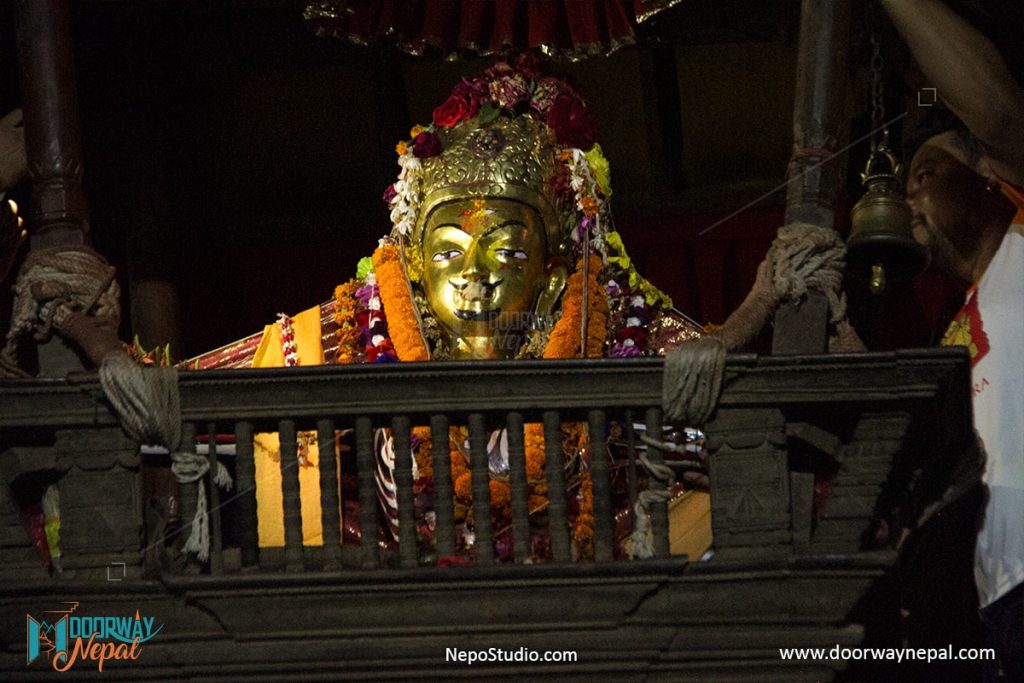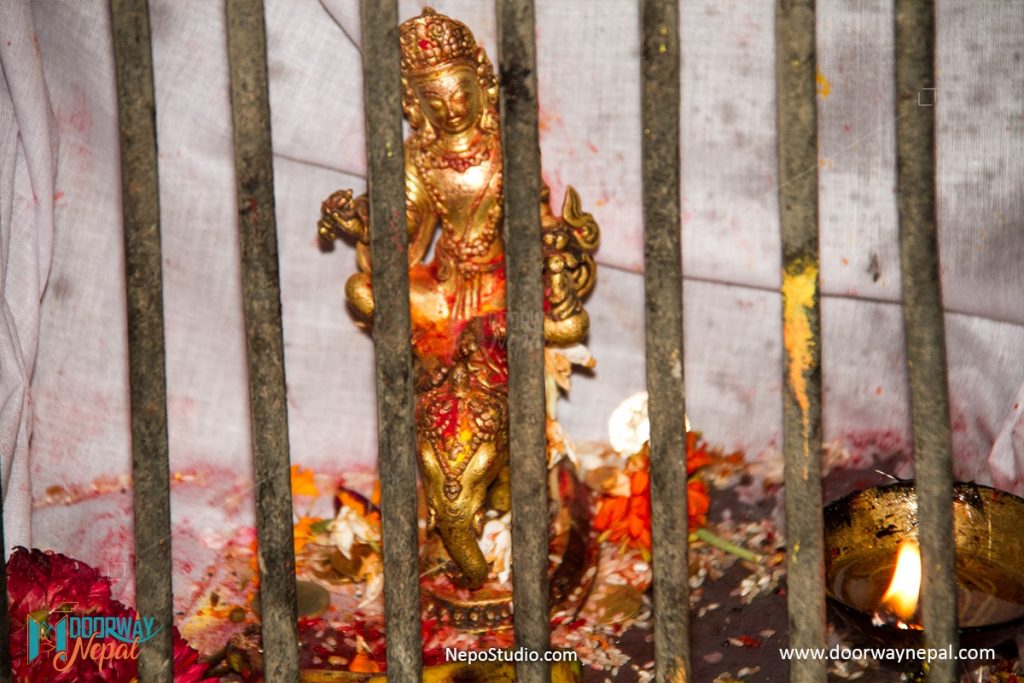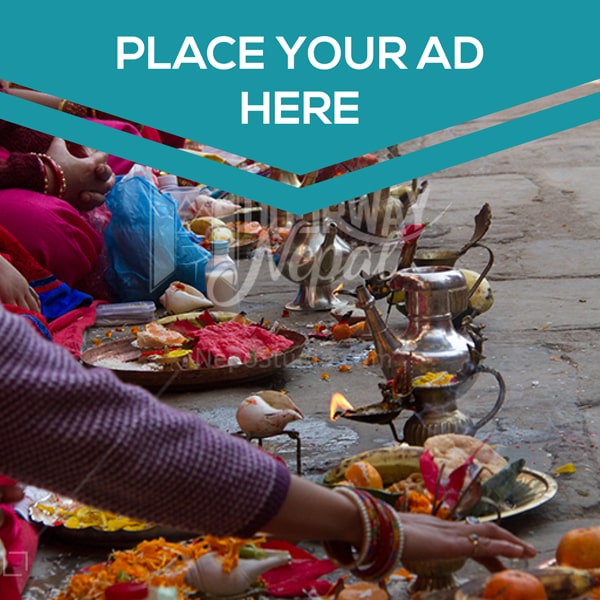Yenya also known as Indrajatra is the festival that displays captivated rain god, Indra. ‘Ye’ mean Indra and ‘Ya’ means Jatra. According to legends, God Indra was captured by the local when he came to steal the ‘Palijaswa’ flower in Kathmandu to fulfill his mother’s wish to use the flower for worshiping purpose.
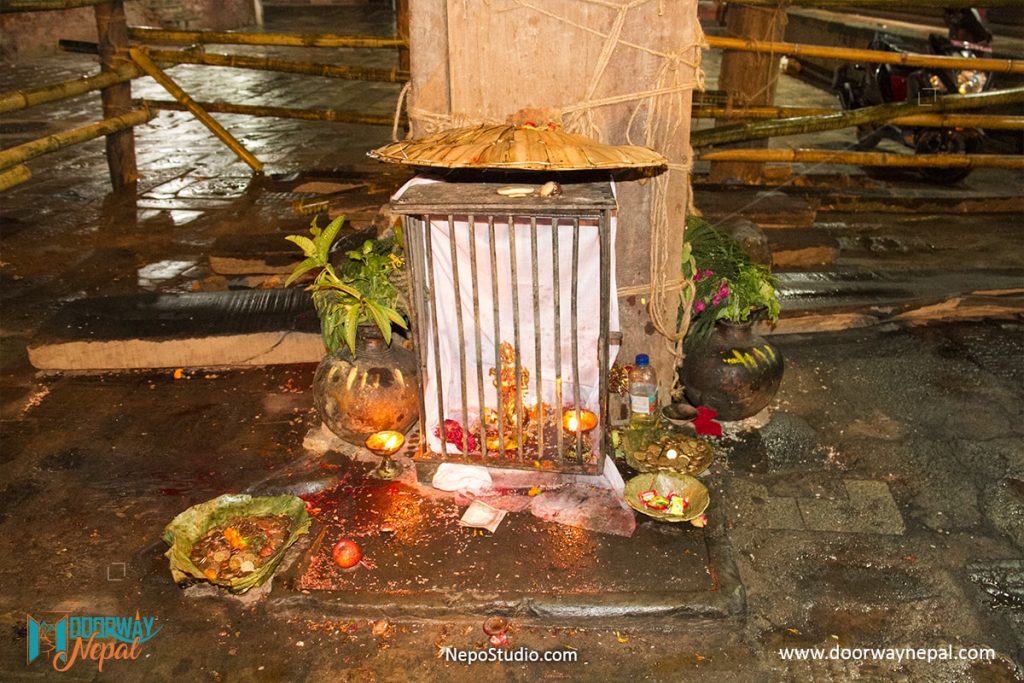
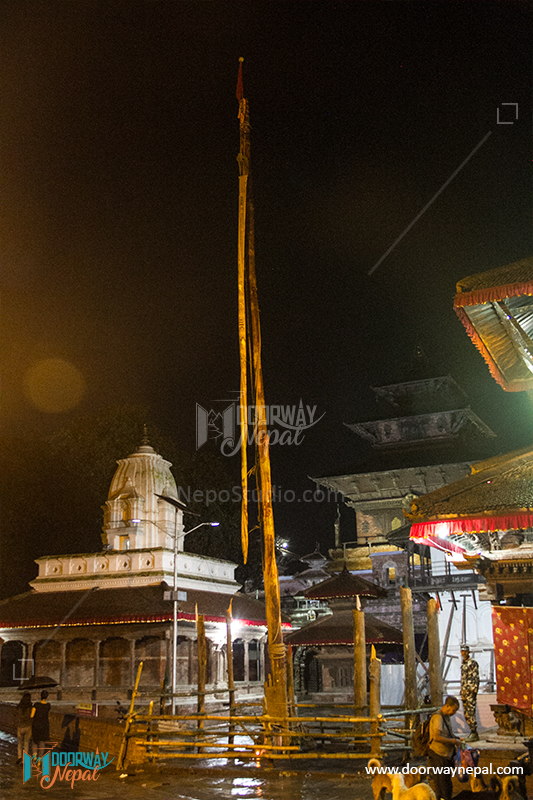
Yenya begins when Yasi is being fixed at Hanumandhoka premises in Kathmandu. The main Jatra of Yenya, which is celebrated for eight days, lies on the days of BhadraShukla Chaturdashi, Purnima and Ashwin Krishna Dwitiya.
On the main three days of Jatra, the living goddess Kumari along with Ganesh and Bhairava travel in the chariot. On the first day of Yenya, a special long wooden post is erected at Hanumandhoka and on the same evening people whose family member demised after last year’s Yenya, lights a lamps and essence on their way to the Upaku route called ‘Upaku Vanegu’.
On the day of Yenya, when the Kumari chariot pulling ends, Dagi and Baumata procession begins. On the eighth day of Yenya, Lakhe, Pulikisi, Sabbhakku, Mahakali dance, Goddess dance, Dashavatara, etc. showcased. Similarly, ‘Hathu Hayekigu’ flowing wine through the mouth of Bhairav is done at Swait Bhairav in Hanumandhoka. Also, Akash Bhairav at Wonga ‘Indrachowk’ and Wakade Bhairav of Vatu is displayed outside the temple.
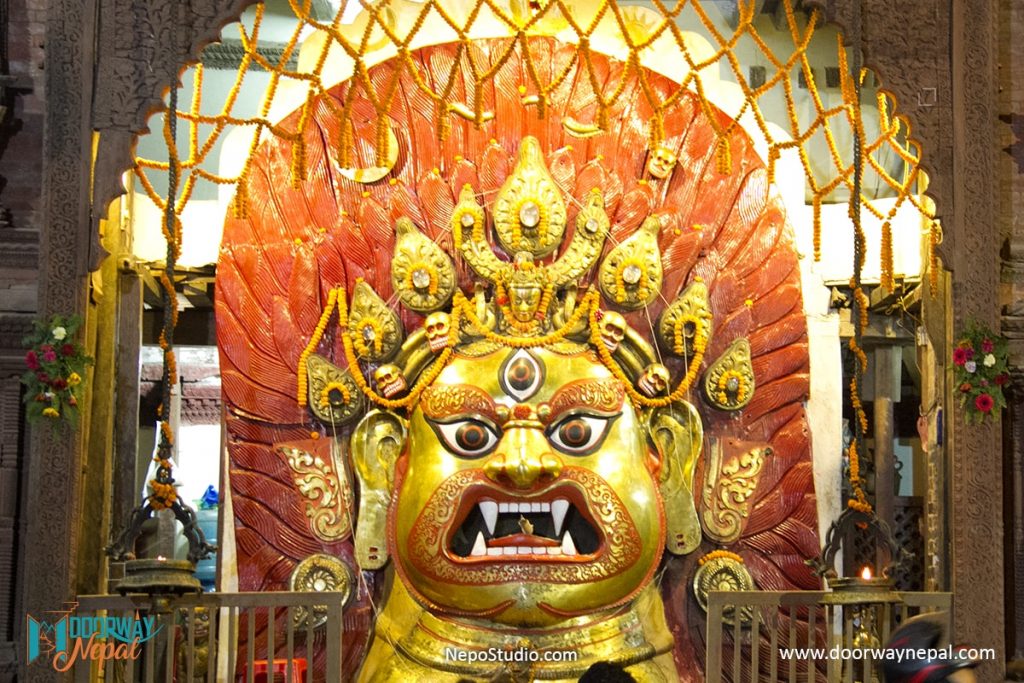
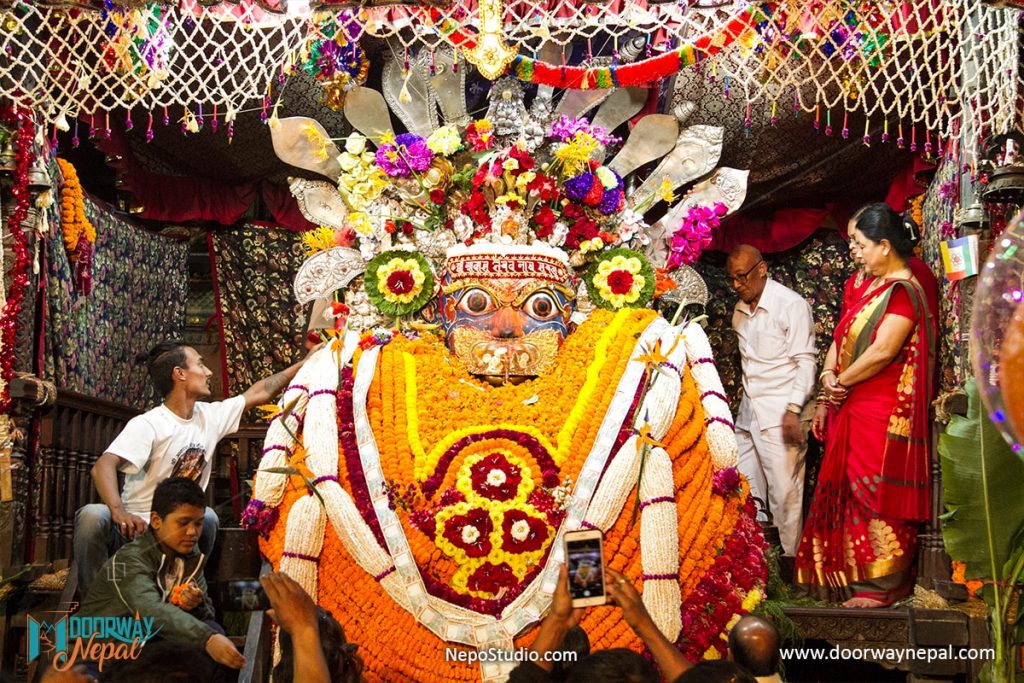
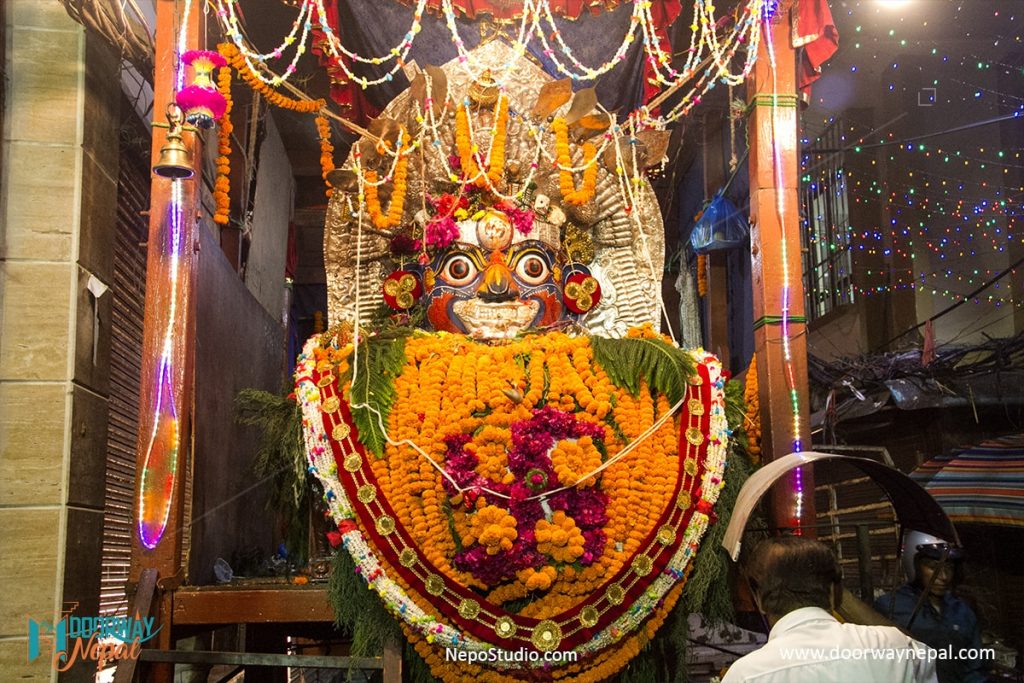
The rath yatra of Kumari, Ganesh and Bhairav, which is the main attraction of Yenya, starts on the fourth day of Yenya. On Fourth Day ‘Koneya’, the chariots are pulled to the lower city ‘Kone’. Kumari, Ganesh and Bhairav sit in the chariot in front of Basantapur Kumari house, the journey from Basantapur to Maru, Chikamugal, Jaisidegal, Lagan, Brahmatol, Hyumat, Kohiti, Bhimsensthan to Maurutol and again to Basantpur is concluded on the fourth day. It is customary to visit Kumari’s chariot on this day for the chief of the nation and other dignitaries at Basantapur.
As soon as the chariot pulling of Kumari is finished, the Dagi come out from Chwasapakha at Maru. The Dagi has been considered as the mother of Indra. The people who’s family member demised after last year’s Yenya, travel to upper city ‘Thane’ with Dagi on this day.
The Dagi yatra, which starts from Maru, heads towards the Thane passing Pafal, Yatkha, Nardevi, Tengal, Bangemudha, Asan, Janabahal, Indrachok, Hanumandhokha, Basantapur and ends at Maru. The Baumata, which is placed at the South side of the Kasthamandav, begins to route as soon as the Dagi reaches Maru. Baumata also routes the same route as of Dagi. Baumata is a lamp lit on the long bamboo kiln like a snake is said to have been lit to see if anyone who had traveled with Dagi is left behind or not.
The next day of Indrajatra, ‘Yehyaa: Punhi’ is celebrated. This day called as ‘Thaneya’ the chariot is pulled from Basantapur through the upper city ‘Thane’. It is also customary to distribute Samaybaji throughout the valley on this day.
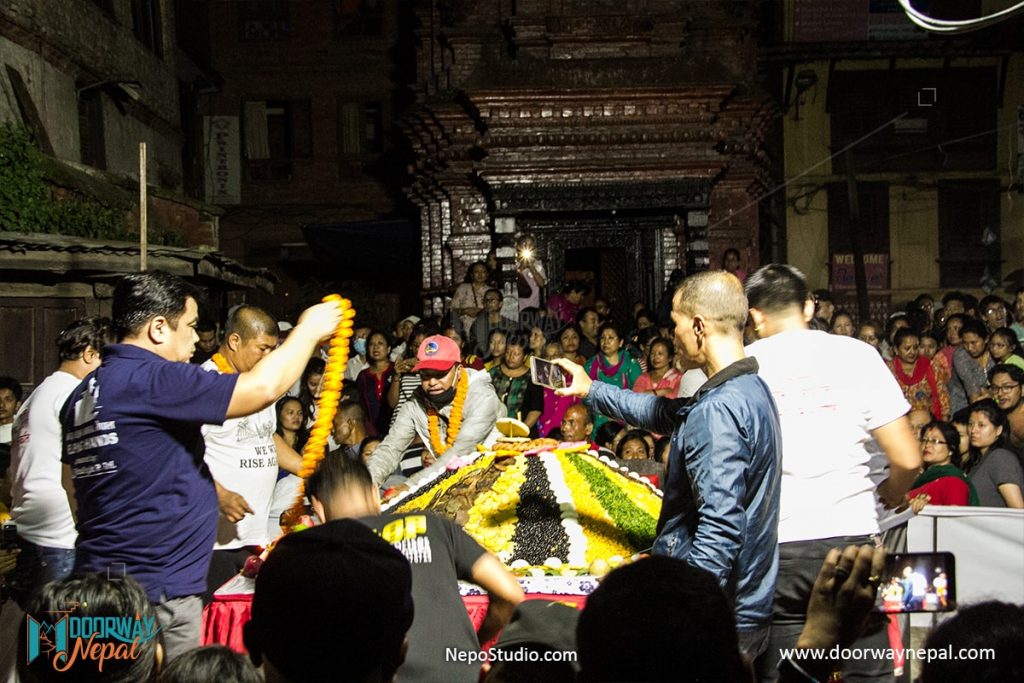
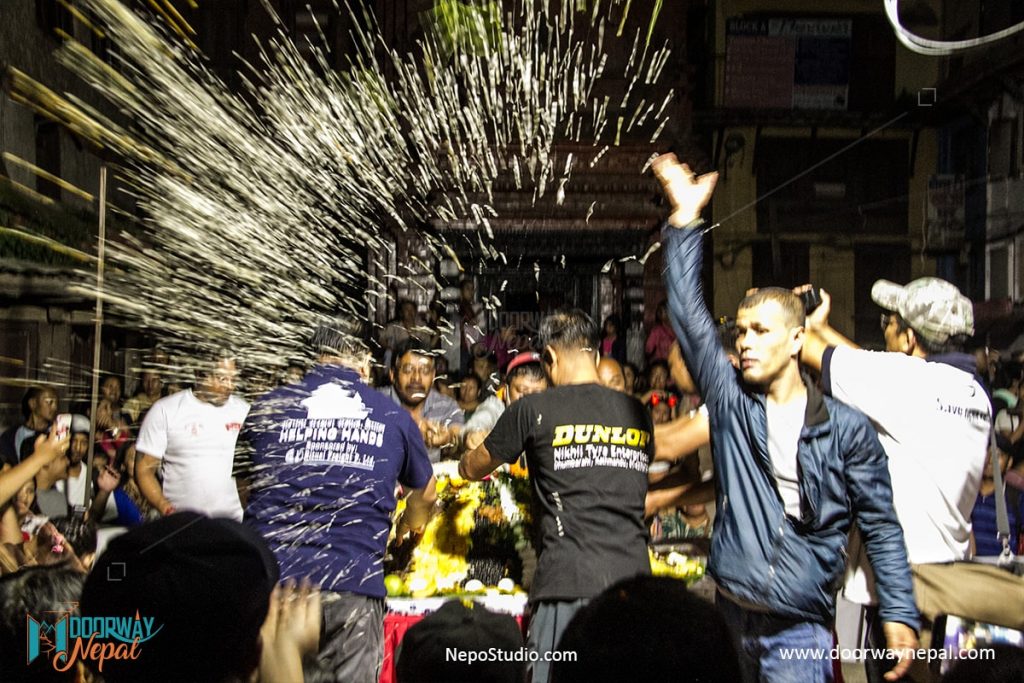
On the last day ‘Nancha Ya’ the chariots are pulled through middle of the upper city. The chariot is pulled from Basantapur to the upper part, Nardevi to Basantapur via Kilgal, Indrachok, Hanumandhoka. On other days, only men have been dragging the chariots but this day, women are the only ones to pull the chariots.
Another attraction of Indrajatra, Lakhe, Pulukisi, Sawabhakku travels around city from day one of the jatra. Lakhe comes from Lakhechhe in Majipat while Pulukisi comes out of Kigal. The Halchowk’s Akash Bhairav is known as Sawabhakku. Likewise Dasvatara the ten forms of lord Vishnu is performed in the temple in front of Basantapur Kumari house. A team of Mahakali dance from Bhaktapur, Madhyapur Thimi, perform dance at Hanumandhoka and other parts of the city where they are invited.
The ‘Yasin’ is collapsed in the Hanumandhoka on the last day. After this it is pulled to Teku Dovan.



